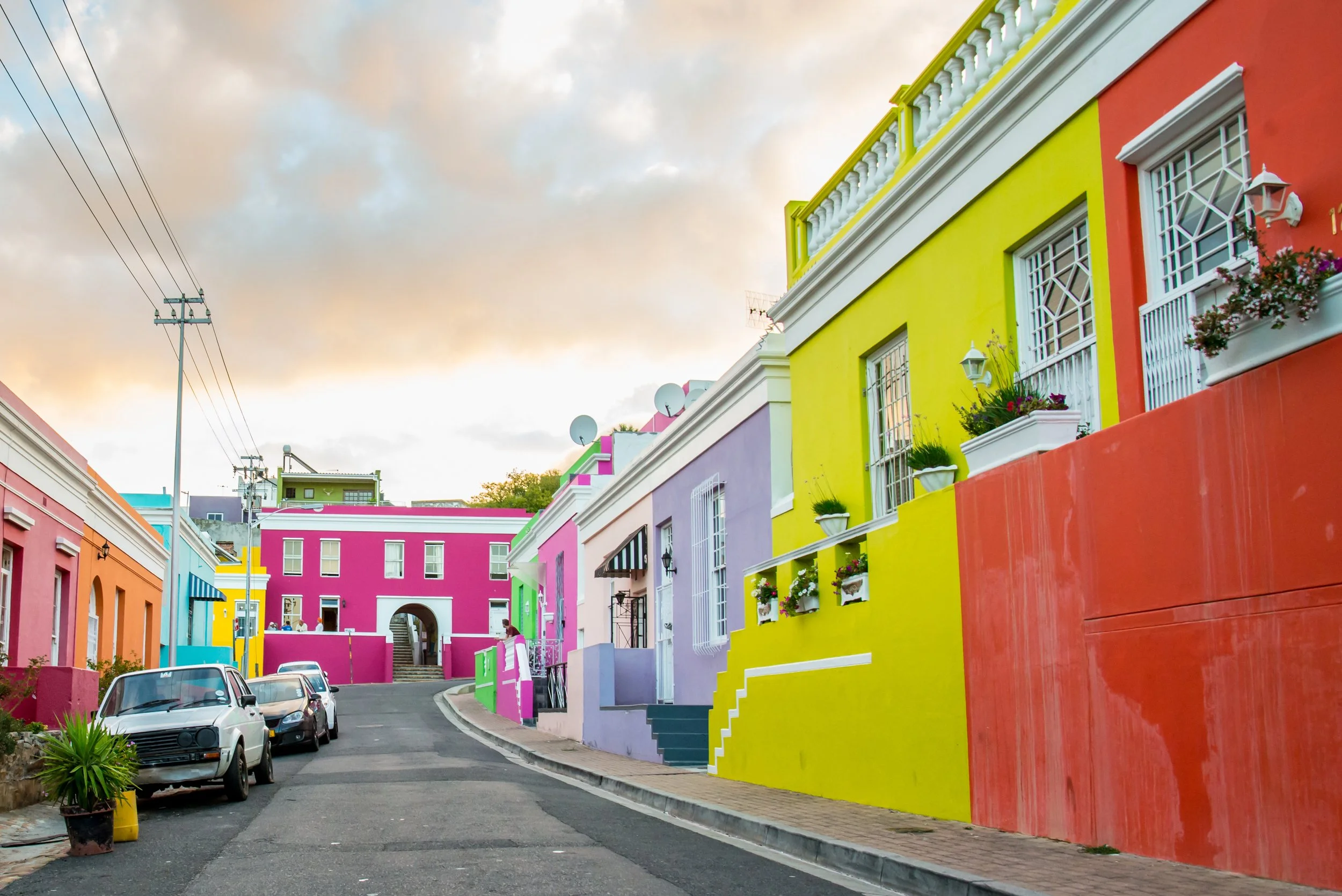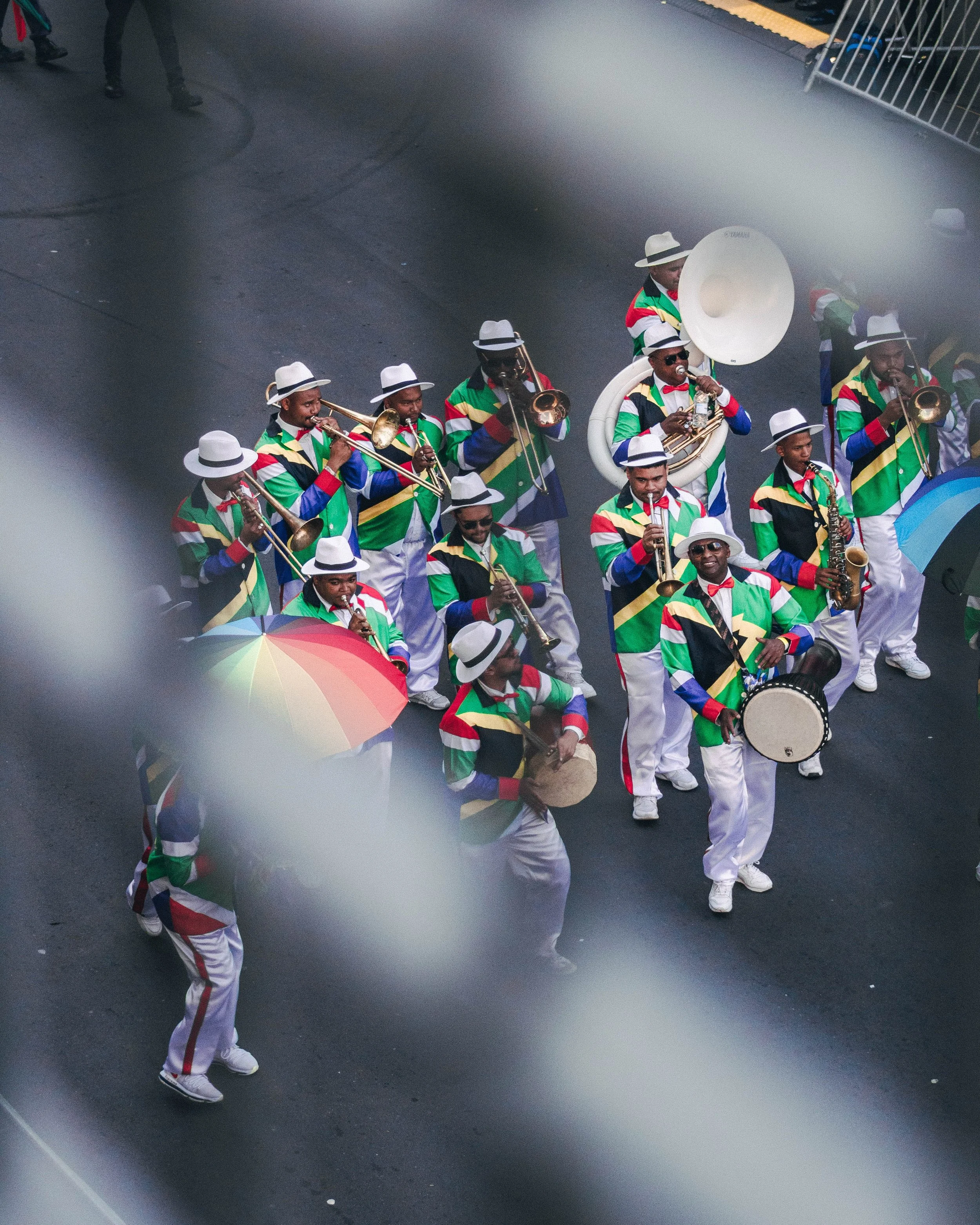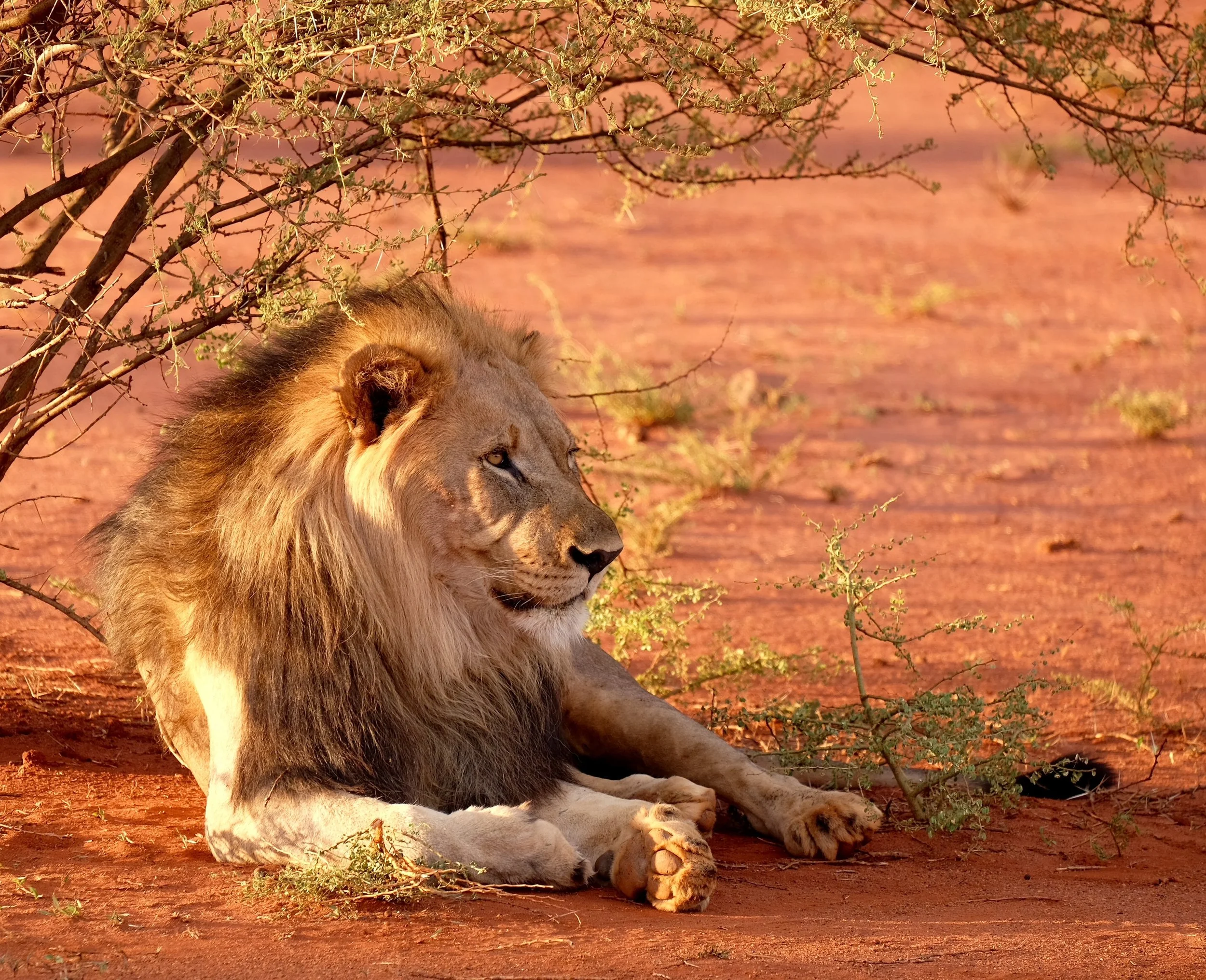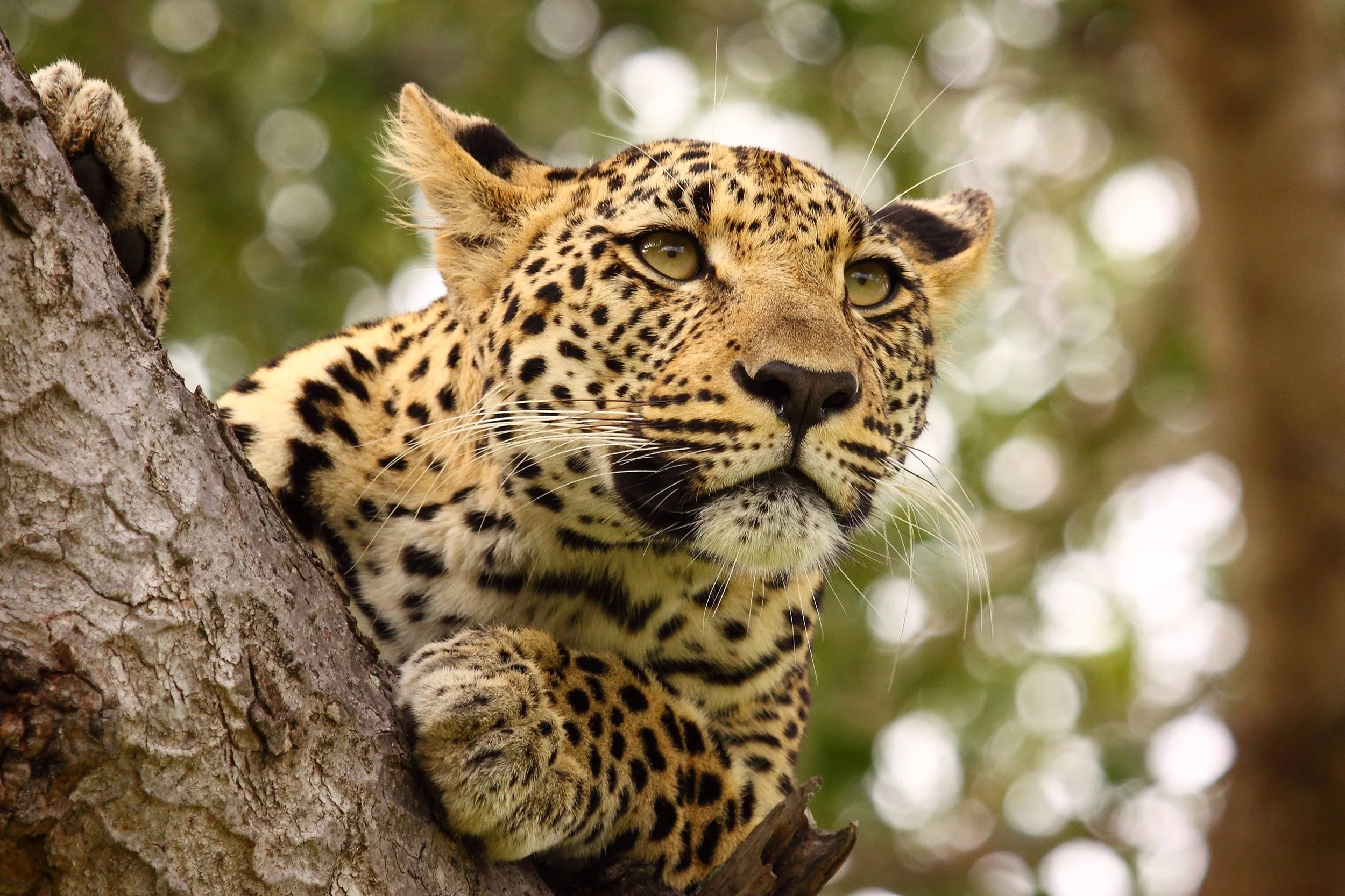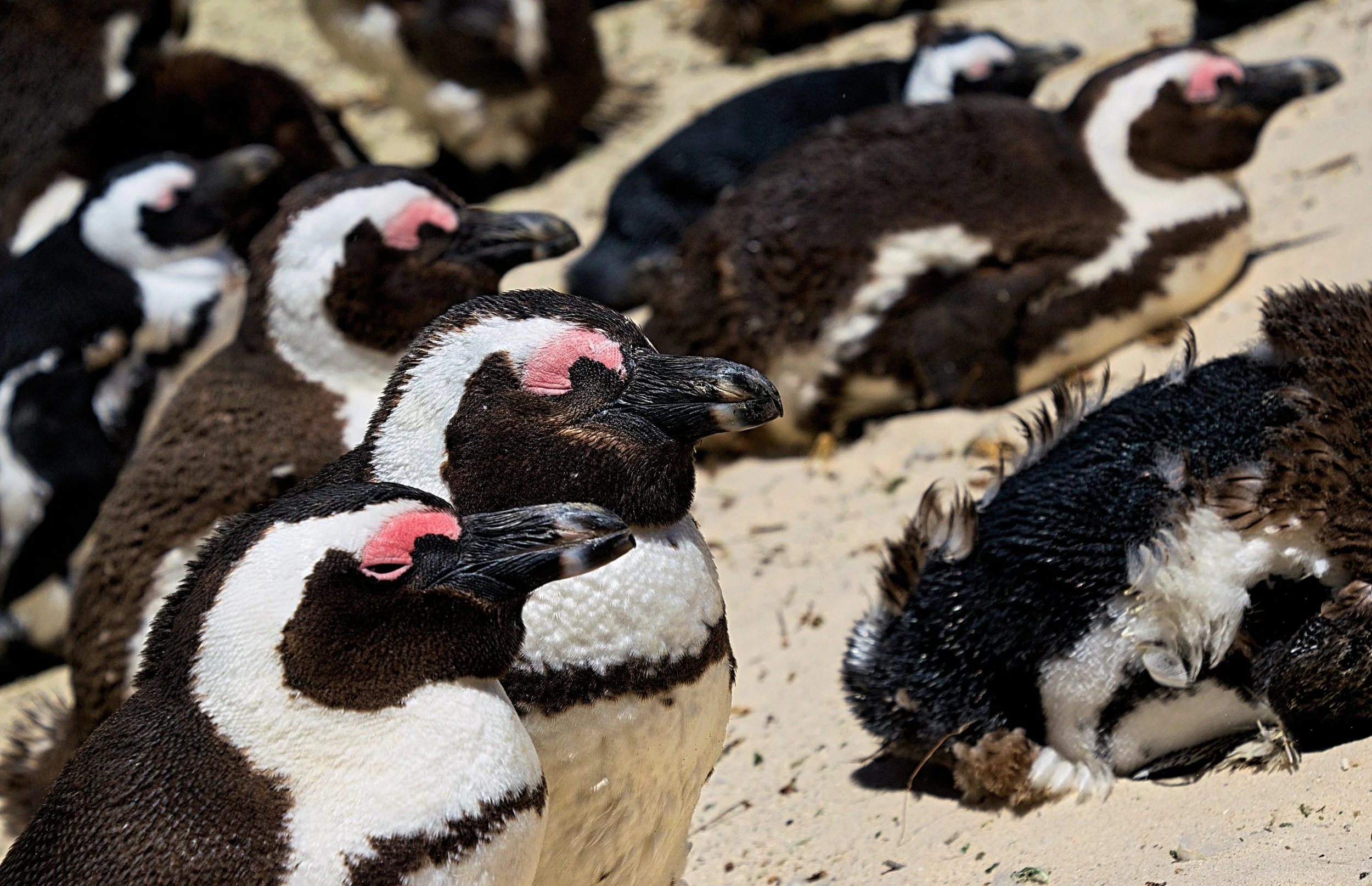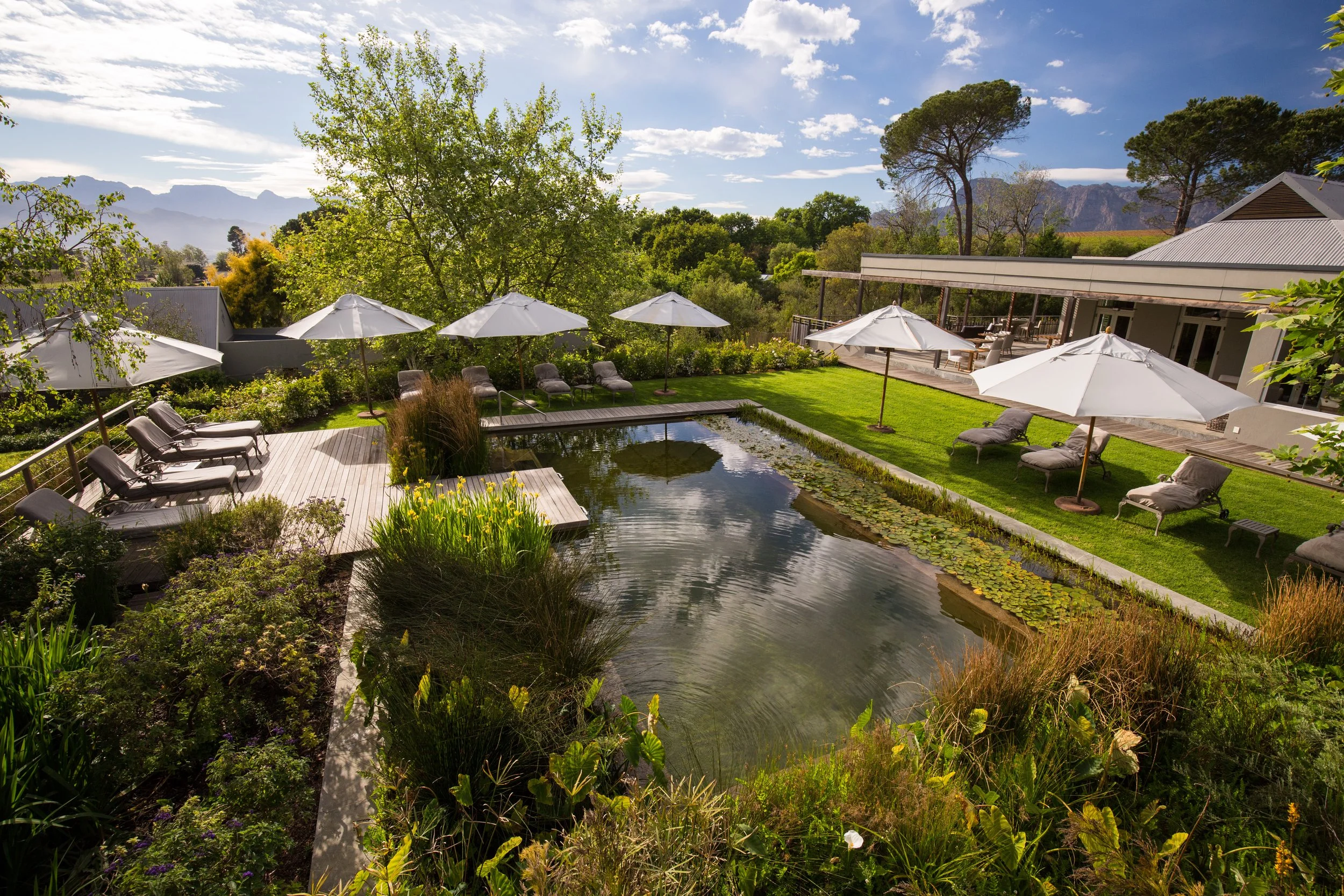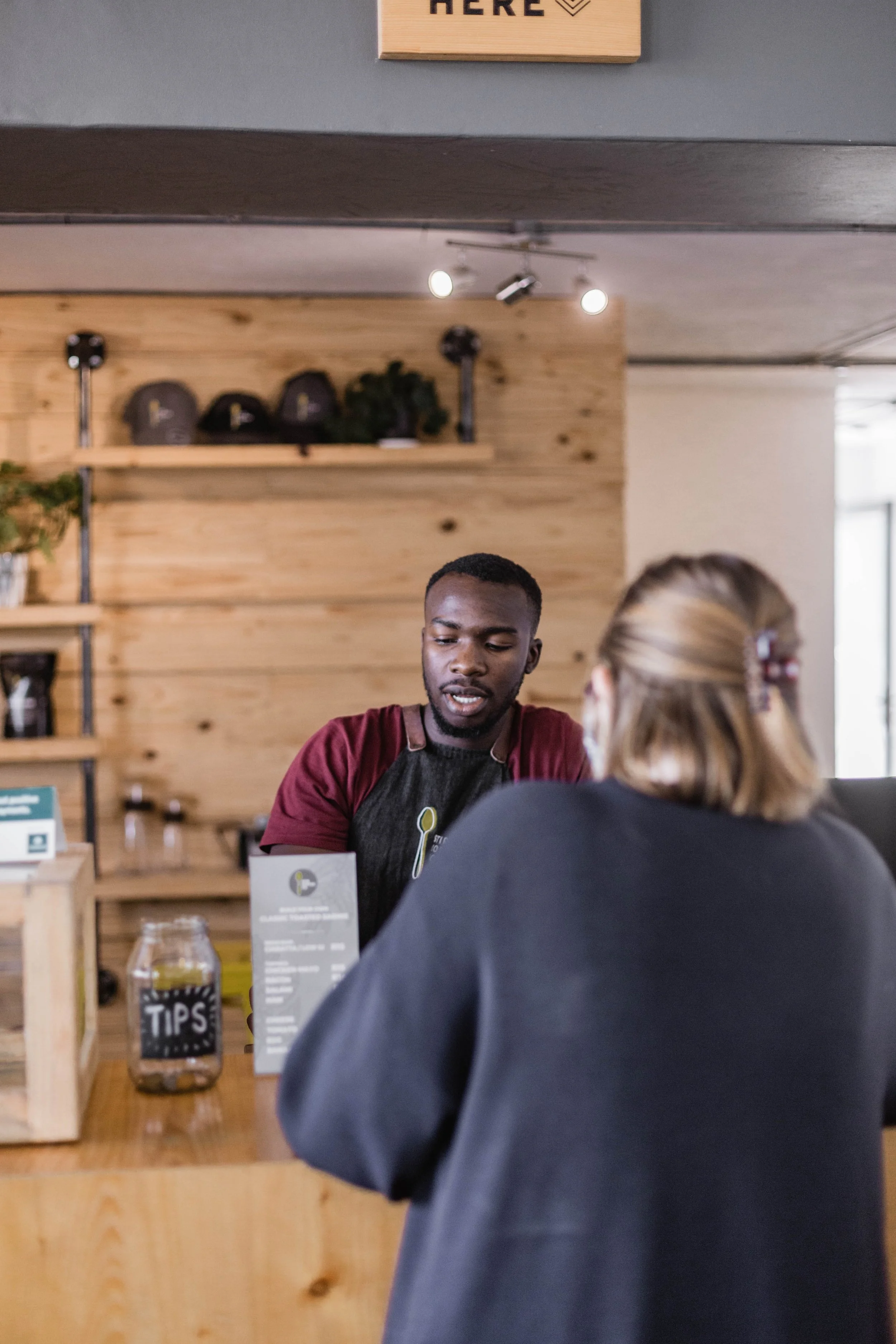The South African Pocket Guide
Written by Zeldi Smulders
Welcome to the Rainbow Nation, a melting pot of geographical, cultural, and natural splendour! Whether you are searching for the Big 5 in the wide-open savannah, surfing the famed waves along the azure coastline, ascending the dramatic peaks of the Drakensberg, or sipping top-class wine between the vineyards, you will find an adventure worth sharing. Here’s a compact guide to inspire and steer your travels in South Africa, the land of never-ending beauty and adventure.
A quick overview of South Africa
Lovingly referred to by the locals as Mzanzi, South Africa has a rich story to tell.
Population
South Africa has a population of just over 59 million people within its 9 provinces. The urbanised Gauteng province in the Highveld area is the most densely populated, whereas the breathtaking yet desolate Northern Cape is the least, making up only about 2% of the population (but 25% of the country’s sheep!).
History
Long before the Dutch East India Company made landfall in Cape Town, for about 2000 years, the Khoi Khoi and the San (together the Khoisan), were widely distributed across South Africa’s plains, coastlines, and deserts. The Khoi Khoi, named so because of the many click sounds in their languages, were skilled nomadic pastoralists and kept large herds of cattle. The San, meaning ‘foragers’, were semi-nomadic, highly skilled hunter-gatherers and expert desert dwellers.
In 1652, Dutch settlers established the first European settlement in southern Africa. Thereafter came the British occupation. Fast forward years later, South Africa went through a process of independence after various key events like The Mineral Revolution and the Anglo-Boer War. Following this, was the deplorable racial segregation period called apartheid (“apartness” in Afrikaans). Apartheid ended in the 1990s and South Africa had its first democratic election in 1994. The incarcerated Nelson Mandela was famously made the Rainbow Nations first democratically elected president and his legacy is one of unification and ubuntu, meaning compassion and humility, and declaring "I am, because you are".
Cultures
Aptly coined the Rainbow Nation by Archbishop Desmond Tutu after apartheid, South Africa holds and celebrates diverse cultural groups, including the Zulu, Xhosa, Pedi, Tswana, Ndebele, Khoisan, Hindu, Muslim, and Afrikaner people.
There are 4 major ethnic groups that form part of what is called the Nguni group, namely Zulu, Xhosa, Ndebele, and Swazi. These 4 groups can sometimes be distinguished by their dazzling traditional attire. Zulu people wear animal skin pelts and beaded reed skirts, whereas Xhosa people typically wear beautiful long skirts and aprons made of embroidered or printed fabrics. In the Ndebele culture, they wear bright beaded ensembles in striking geometric patterns, and in the Venda culture, they wear striped shawls called nwenda that they often tie around their waists.
Languages
South Africa recognises 11 official languages, including English, Afrikaans, Ndebele, Northern Sotho, Southern Sotho, Swati, Tsonga, Tswana, Venda, Xhosa, and Zulu. English is commonly spoken but, be that as it may, we challenge you to learn a couple of phrases in an indigenous language too!
The lay of the land
As its name suggests, South Africa is found at the southern tip of the African continent. It shares a land border with 5 other countries, including spectacular Namibia (which was once part of South Africa), Swaziland, Mozambique, Botswana, and Zimbabwe. The petite (well, according to African standards) Kingdom of Lesotho is also landlocked within South Africa.
What may be confusing to many is that South Africa has three capitals - Pretoria (administrative), Bloemfontein (judicial), and Cape Town (legislative)!
South Africa has 8 major land biomes: the dry Nama Karoo in the northwest, the ancient Succulent Karoo and Mediterranean-Esque Fynbos biomes in and around Cape Town, the sprawling grasslands in the Highveld, the savanna that covers more than 1/3 of its landmass (including parts of the Lowveld where the Kruger National Park is), forests along the eastern coastlines, and in the northeast, arid deserts in the interior, and thickets in between!
Sounds like a blissful utopia, doesn’t it? Well, we are only getting started.
Mountains
The Drakensberg is the highest mountain range in South Africa with a rise of a whopping 3.475 m. Apart from the famous flat-topped Table Mountain in Cape Town, other worthy mentions include the dramatic Cederberg in the Western Cape and the long-lived Magaliesberg, a hiking gem that separates the savannah in the north from the grasslands to the south.
Waterfalls
Another alluring feature of the greener areas in South Africa is the numerous waterfalls. Many of them are found along the scenic Panorama Route in Mpumalanga. There are plenty more spread across the east and west sides, including the Tugela Falls in KwaZulu-Natal, one of the highest waterfalls in the world at 947 m!
Seaside
Surrounded by the Indian Ocean on the east and the Atlantic Ocean on the west with a coastline stretching more than 3.000 km, South Africa has no shortage of beautiful beaches and the coastal delights that come along with it. There are beaches in forests along the Garden Route and even some along the desert border of Namibia. Imagine white sandy beaches found in west coastal areas like Camps Bay, warm swimming beaches found alongside the Indian Ocean, and almost 50 Blue Flag beaches to show off to the world!
Deserts
The three deserts in South Africa include the semi-arid Kalahari Desert in the Northern Cape, the semi-arid Karoo Desert about 120 km north of Cape Town, and the Namib Desert found along the west coast of South Africa. You can expect these areas to be alive with animals like the endangered wild dog and venomous puff adder, in temperatures that can quickly rise to more than 30°C.
Forests
Although forests are southern Africa’s least extensive biome, the ones in existence are wondrous to behold. You will find the most sizable forests around Knysna in the Garden Route, but you can also explore thickets teeming with critters in the Eastern Cape and KwaZulu-Natal along the east coast.
Wildlife and Safari
Nature and wildlife experiences are omnipresent with each segment of the country having something special to share. Safaris can be enjoyed just about everywhere! Be it in a national park or a private reserve, here’s what you can expect to see:
Wildlife
The list of animals to see in South Africa is endless. You can not only stand a chance to see the Big 5 (lion, leopard, buffalo, elephant and rhino), but you can also admire wild and wonderful hippos, zebras, giraffes, cheetahs, baboons, and various antelope species, like the national animal, the springbok. In the coastal areas, there are gentle seaside creatures like seals, whales, and African penguins to look forward too.
Plants
South Africa has over 25.000 species of flora owing to its diversity of landscapes. We’re talking about more than 500 species of grass! You can find 230 different families and 10% of the world's flowering species across forests, deserts, grasslands, and more. Some of these plants have been used by the indigenous people for their medicinal qualities and are still being used today. Don’t miss the Cape Floristic Region filled with shrubland flora called fynbos, featuring South Africa’s magnificent national flower, the king protea, and the well-loved rooibos leaves used to create tea, gin, and cosmetics.
Birdlife
In South Africa, you can see over 850 species of migrant and endemic birds. Various parks and reserves have bird hides, information stations, walking trails, and guided tours to help you spot these feathered beauties. Some iconic endemic birds to look out for include the Cape parrot, Knysna loerie, and blue crane, South Africa’s graceful national bird.
Climate and when to go
South Africa is a year-round destination with excellent weather conditions. The best time to visit can depend on what you want to do during your stay. Lengthy summer days are best spent at the magnificent beaches, while game viewing is best in the dry winter months. If you are planning on going to the Western Cape, summer is the best time to go because there are plenty of outdoor activities to enjoy. On the other hand, this area’s winters are ideal for whale watching. You really can’t go wrong!
Top attractions
Table Mountain
Table Mountain – named after its appearance – is a flat-topped mountain towering 1086 m over Cape Town. The summit can be reached by cableway, offering sprawling views on your way up. Alternatively, there are various hiking trails for different fitness and experience levels. This option will help you get up close to the indigenous fauna and flora of this area. When you reach the top, you have a wide view of the city below that’ll leave you speechless.
Robben Island
Just shy of the Cape Town harbour you will find Robben Island, a designated World Heritage Site. When visiting this island, you will have an opportunity to learn more about the renowned anti-apartheid political leader, Nelson Mandela. Take a tour of Nelson Mandela’s former prison cell and learn more about the years he spent on the island.
Cape Winelands
This fertile land called the Cape Winelands boasts magnificent mountain and vineyard views. Picturesque towns like Stellenbosch, Franschhoek, and Paarl will delight you with their history and culture. Here you will follow various wine routes to visit top wineries, many of which have centuries-old stories to tell. The wines they produce are top-class and wine tastings are an exceptional experience for both casual holiday goers and wine connoisseurs.
Garden Route
Found along the Indian Ocean on the southeastern coast of South Africa, this scenic route covers about 300 km from Mossel Bay in the Western Cape to Storms River in the Eastern Cape. Don’t miss out on encounters like the lagoons and forests of the Knysna area, the seals and beaches of Plettenberg Bay, the ostrich farms and Cango Caves in Oudtshoorn, or the elephants and safaris at Addo Elephant National Park.
Kruger National Park
Kruger National Park expands over the northeastern side of South Africa with Zimbabwe bordering it on the northern side and Mozambique on the east. This park is home to hundreds of species, including the Big 5. This is a great self-drive destination but other game drive experiences can be arranged with ease.
Blyde River Canyon
On your drive between Johannesburg and Kruger National Park, you should make a stop at Africa's second largest canyon (after the Fish River Canyon). This canyon is the greener of the two, with lichen-covered rock formations and gleaming rivers and waterfalls. After you have admired the valley below, you can go to the closeby panoramic viewpoint called ‘The Three Rondavels’ to see three ‘rock huts’ towering 700 m high at the farthest wall of the Blyde River Canyon.
The Wild Coast
The name gives a good hint as to what you can expect at this pristine wilderness possessing a striking coastline with secluded bays, ragged cliffs, and incredible hills, together with a rural character that leaves all thought of modern life behind. This 250 km long stretch, also known as the Transkei, is found along the northern coastline of the Eastern Cape, going all the way up to the border of KwaZulu-Natal. It is known for its majestic hiking and horse riding trails, scenic isiXhosa villages, as well as snorkelling and diving expeditions.
If it isn’t already obvious and you want to find out more about why we chose South Africa, read: Sustainability at Viatu: How We Choose Our Destinations
Sustainable Stays
With a boggling amount of accommodation options to choose from, there is surely one suited for your budget. Our selected accommodations range from rustic and comfortable to exorbitantly luxurious, and they are also doing great in terms of their sustainability efforts. Here are a few of our favourite hotels and lodges:
Tucked between Table Mountain and the Atlantic Ocean, Ocean View House is within walking distance of the coast and an easy drive to the centre of Cape Town.
Angala Boutique Hotel is a 5-star sanctuary blending luxury with the pristine beauty of nature, located in the heart of the Cape Winelands between the mountains of Paarl and Franschhoek.
Surrounded by stunning views of the African horizon, emerald landscape, and azure ocean of the Garden Route, the modern Alkira Lodge will satiate your need to be immersed in nature.
Need to know
Visa
Before you are allowed to visit, you must supply a valid visa. There are however a few countries that fall under the visa exemption list. Check your country’s status here.
Vaccinations
The type of vaccines you need depends on your country of origin. It is best to visit a doctor at least 6 weeks before visiting South Africa to find out about the mandatory and recommended vaccines. Check out our Covid Hub to see the latest news on entry requirements.
Medication
If you are visiting areas in the far north of South Africa like Limpopo, Mpumalanga and north-eastern KwaZulu-Natal between October and May, there may be a malaria risk. Consult your doctor before you leave to find out if you need to make use of antimalarial medication. Keep in mind that, depending on the type of medication, you need to start taking it multiple days before your trip as well as during and after. Areas to the south and west of the country like the Eastern Cape and Western Cape (including the Garden Route, Cape Town and surrounds) have no known malaria risk. Have a look at a map shared by the CDC here to see if this will affect you during your trip.
Travel insurance
Although it is advisable to get travel insurance, it is not mandatory to do so when visiting South Africa.
Ease of travel
You will probably land in either O.R. Tambo Airport in Johannesburg, Cape Town International Airport, or King Shaka International in Durban. Although you may see a lot of public transport around, some methods are more reliable than others and it is best to make use of private companies where possible. Uber drivers are readily available in most areas and there are plenty of car rental options available.
You may use a foreign driver’s licence as long as it is valid in your country and it is translated into one of the official South African languages. Remember to drive on the left side of the road!
Time zone
South Africa’s time zone classifies as SAST (South Africa Standard Time) and there is no daylight savings period.
Safety
Petty theft is common, so you will need to be streetwise. Don’t leave items unattended, don’t be flashy with expensive technology or jewellery, and don’t wander alone at night. Keep the following phone numbers with you in case of emergency:
Any emergency: 112
Police: 10111
Ambulance or fire apartment: 10177
South African Tourism helpline: (+27)83 123 6789
Currency
South Africa uses Rand with a currency code of ZAR. The currency uses both coins (5c, 10c, 20c, 50c, R1, R2, and R5) and notes (R10.00, R20.00, R50.00, R100.00, and R200.00).
Exchange
There are plenty of money exchangers, local banks, and online currency exchange services to choose from, and they all charge different rates. To make the exchange, you will need proof of identification, your passport, and proof of residence (no older than 3 months).
Cash and card
Most shops accept card payments but it is good to have some cash on you for the few that don’t, especially if you are visiting a local market.
Tipping culture
In South Africa, it is customary to reward commendable service. A 10% tip is standard at restaurants, coffee shops, bars, and for drivers. You can also tip other general workers like petrol attendants, car guards or someone who washes your hair at a hairdresser. It is common to have someone guard your car in a parking lot or for a petrol attendant to do something extra like washing your car windows. There isn’t a set amount for this and it is rather based on what you think is fair, however, the average range is between €0.30 - €1.10 (R5 - R20).
In hotels and lodges, workers like housekeepers, porters, and valets can be tipped between €1.10 - €5.60 (R20 - R100) and the same applies for beauty and wellness professionals, while safari staff like guides and rangers can be tipped between €2.80 - €14.00 (R50 - R250). The amount will depend on and increase according to the duration of your stay and any extra services required. Remember, each member should be tipped separately.
Tipping is normally done for any front or back of house staff that goes the extra mile to make your trip an exceptional experience, and any amount you give will surely be warmly received. Make sure you have enough cash on you or find out how you can add a tip to your card bill. If you are unsure about the when and how, feel free to ask the manager of the establishment.
Cellular and telecommunication
The cost of a SIM card can range between €0.05 - € 0.25 (R1.00 - R4.00) and can be purchased at most general convenience shops or online from the mobile phone operator of your choice. Some of the main mobile phone providers in South Africa is Cell C, Vodacom, and MTN. For about €5.70 (R99.00) you can get 1GB of data that will expire after a month. Keep in mind that the dial code for South Africa is +27.
Power plugs and electricity
The common electrical plugs in use are type C, the one with 2 round pins (also used in Europe), and type M, the one with 3 round pins arranged in a triangle.
Heads up! When visiting South Africa, you might experience load-shedding. This is the implementation of rotational power outages - about 2.5 hours per slot - to balance the demand and supply of electricity from South Africa’s primary electricity provider, Eskom. Many service providers have generators for important use circumstances but it is good to know what to expect. Download the free EskomSePush app for updates on the load-shedding schedule for the area you find yourself in.
Drinking water
South Africa’s tap water is perfectly drinkable in most areas, especially in the cities and towns. In smaller towns and rural areas, you may want to check the status of the tap water. If you are worried, buy a 5 litre bottle of filtered water (available at most convenience shops) and use it to fill up your own water bottle as needed.
Essential items
As you will probably be spending a lot of time outdoors, it is important to pack good walking shoes. The weather can be unpredictable in some areas, so be sure to pack a wind-resistant jacket. Don’t forget to protect your skin against the African sun with a sunblock of at least 35 SPF and a wide-brimmed hat. Pack your swimming gear for good measure and add a camera to capture the memories.
Vital vocabulary
South Africans appreciate politeness and respect. Some vital phrases to learn include how to say “hello”, “please”, “thank you”, “excuse me”, and “goodbye”. The language you should speak will depend on the area you are in, but languages like Afrikaans and Zulu are quite popular and somewhat understood in most areas. You will also find a multitude of slang words and it is good to sharpen up on it if you don’t want to be left in the dark. Get ready to hear exclamations of “lekker” (used when something is good or pleasant) and “aikona” (used to express denial), along with other tongue-in-cheek expressions that you will grow to love.
You’ve heard all about the vast landscapes, thrilling wildlife, and diverse people. Now, experience it for yourself. South Africa is waiting for you!


